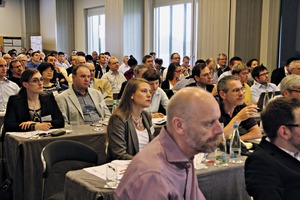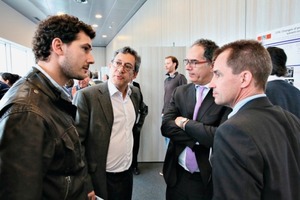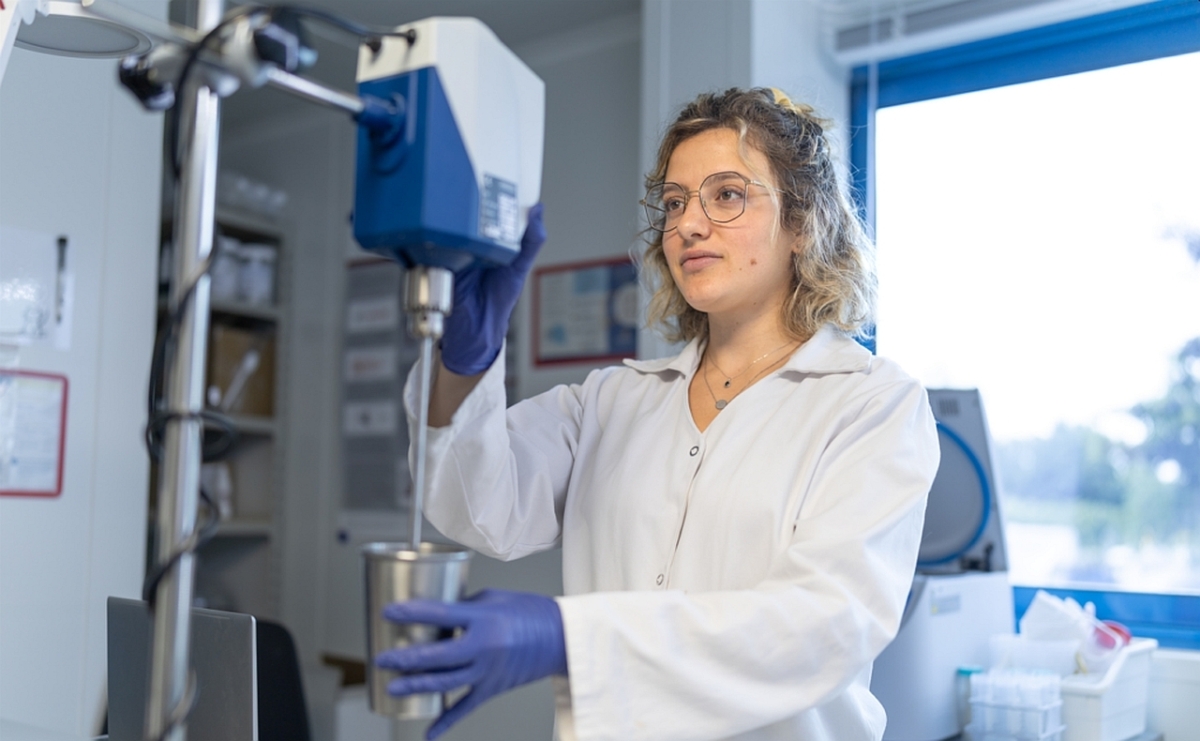Ten years of success and a bright future
Concrete is the most widely used building material in the world, but the fundamental mechanisms underlying its behaviour are very poorly understood, because of its chemical and physical complexity. Nanocem, founded in 2004, is a consortium of 23 academic and 11 industry partners with a common interest in fundamental research into the nano and micro-scale of the phenomena that govern the performance of cements and concrete.
With its unique cooperation between the industry and the academic community, Nanocem has identified common issues and has helped map the research needs for sustainable cement and concrete. During these last ten years, Nanocem has funded fourteen Core Projects, long term fundamental research projects carried out by two or more partners. The academic partners have shared the results of some seventy Partner Projects. There are some 120 academic researchers in the team who, between them, are in the process of managing some 60 PhD and PostDoctoral research projects in related areas. Nanocem is now recognised as the world reference for quality research in cementitious materials.
To celebrate Nanocem’s 10th anniversary, an open meeting for all interested parties was held on 08.04.2014 in Lausanne/Switzerland. At this convention attended by around 120 people, some of the key achievements of the network were presented, among them:
Thermodynamics modelling to quantify hydrated phases in cement
State-of-the-art experimental technique Proton Nuclear Magnetic Resonance
Modelling technique such as atomistic modelling
Influence of admixtures on cement hydration
Reactivity of blended cements
In parallel, a comprehensive poster session highlighted selected Nanocem research projects.
In her introduction, Prof. Karen Scrivener (EPFL) and coordinator of Nanocem, presented the background behind the foundation of the network: the initial meeting with six partners from both science and industry took place in May 2002 in Paris/France. After an unsuccessful bid for an EU Network of Excellence the decision to form an independent consortium was made in March 2003 and one year later, in May 2004, a consortium agreement was signed – Nanocem was born.
Today, Nanocem is a complex, dynamic and evolving research network, an industrial academic partnership for fundamental research on cementitious materials, that finances core projects, develops European projects, and pursues multiple interactions between partners: industry-academic, academic-academic and industry-industry, Scrivener said.
Eventually we will be able to make predictions of solid phases in cement as a function of many parameters, as well as of the microstructure, pore structure and movement of “water”, she went on. Tests to verify the suitability of innovative materials will be available and new ways to predict the performance and service life of structures will be used. “We need the definition of a road map for safe and effective use of new materials”, she concluded.
Thomas Matschei (Holcim Technology Ltd.) gave a presentation on “Thermodynamics: from phase diagrams to predictive engineering”. He underlined the necessity of generic tools to establish quantitative links between cement chemistry and mineralogy with physical and mechanical properties of concrete. Thermodynamic tools could be useful to determine reaction pathways, quantify reactions and enable new ways to optimise complex cement compositions. “They can serve as input for powerful predictive engineering tools”, Matschei concluded.
“Water and cement: new insights from Nuclear Magnetic Resonance techniques” was the subject of Prof. Peter J. McDonald (University of Surrey), he showed how this technique was able to “see” the water inside cements and concrete. Next Prof. Robert J. Flatt (ETH Zurich and formerly at Sika Technology AG) gave a talk on “Workability and interactions between admixtures and cement” where he emphasized the growing role of superplasticizers in modern concrete.
Paul Bowen (EPFL) showed how “Atomistic modelling of cementitious materials: from crystal growth to disordered structures” was a tool with great potential for cement chemistry especially for near-surface mechanisms of phenomena which by essence are very difficult to assess experimentally. Barbara Lothenbach (EMPA) discussed the “Effects of Supplementary Cementitious Materials on microstructure and performance of cements”. A path to reduce CO2 emissions is the use of SCMs but in using these, the chemistry of cement is changed. About half the Nanocem Core projects and many other projects associated with Nanocem have dealt with SCMs.
Finally, Wolfgang Dienemann (HeidelbergCement) gave “An industrial perspective on the future of Nanocem”. From his point of view, the Nanocem network had proven its value for industry and academia and “excellent progress has been made in several research fields”. Dienemann highlighted the need for a joint research to enable innovations which can only increase with time and pointed out that the network was self-sustaining and had demonstrated its ability to adapt to changes. Dienemann concluded that Nanocem last ten years had been nothing else but success and Nanocem had a bright future ahead.
//www.nanocem.org" target="_blank" >www.nanocem.org:www.nanocem.org






